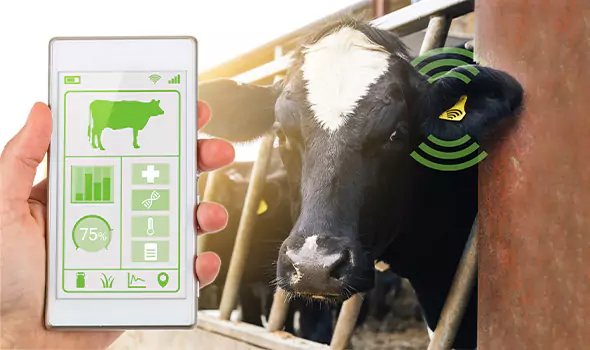
Animal Healthcare
Biosensors and their utility in animal disease diagnostics
Globally, infectious diseases are the leading cause of mortality in man and animals. Infectious diseases of both domestic and wildlife pose a serious health risk to humans as exhibited by the current ongoing COVID-19 pandemic. These infectious diseases can be of zoonotic origin affecting not only human health, but also, animal health and production. Such diseases pose a serious threat to a country’s growth, economy, and health perspectives. To prevent the spread of infectious diseases it is imperative to develop rapid and sensitive tests for early detection of the causative agents. It aids in adopting suitable preventive measures, compartmentalization of the infected zones, and designing strategies to prevent further spread of the disease. The viral agents can be detected in the clinical samples by gold standard virus isolation in cell culture system. This method has well-known merits and demerits such as economic investment, expert manpower, and time-consuming lengthy protocols (from days to weeks). On the other hand, molecular detection methods such as conventional Polymerase Chain Reaction (PCR), Real-time PCR (RT PCR), although they are both sensitive and specific, cannot be employed for pen-side diagnosis due to the involvement of sophisticated instruments. In such a scenario, the development of a rapid, sensitive, and specific pen-side test is the need of the hour and is a challenge for the scientific community to combat the emerging and re-emerging diseases. With the limited infrastructure for the diagnosis of the emerging and re-emerging infection, biosensors can be an effective tool to perform field-based diagnosis and animal health monitoring. Easy handling, user friendly, and minimum processing endows biosensor an effective tool for disease diagnosis. In the past few decades, a lot of work has been done on this aspect for the detection of both viral and bacterial pathogens. Various molecules like nucleic acids, antibodies, antigens, and proteins of animal origin are detected in the clinical samples in these biosensing elements.
The principle of a biosensor is based on the detection of a biomarker molecule in the clinical sample. This biomarker can be any protein, antigen, or antibody of the infectious agent. The biomarker molecule is detected by the bioreceptor which is immobilized on a chip or another base. This bioreceptor could be DNA, RNA, monoclonal antibody, protein, or any cell. However, it is important to choose the bioreceptor carefully as it is the deciding factor for the sensitivity and specificity of a biosensor. Although there are several types of bioreceptors, the most common types used are nucleic acids, enzymes, and antibodies. The interaction between the biomarker and bioreceptor generates signals via transductor which are read and interpreted. The signals generated give information regarding the presence or absence of the pathogen in the sample. These biosensors have been developed to detect many animal pathogens like E. coli, Salmonella, Clostridium perfringens, Avian influenza virus(LPAI and HPAI), Bluetongue and Epizootic Hemorrhagic Disease Viruses, Foot-and-Mouth Disease Virus, Bovine Respiratory Syncytial Virus, Bovine Viral Diarrhea Virus, Porcine Reproductive and Respiratory Syndrome (PRRS) Virus.







Add your comment